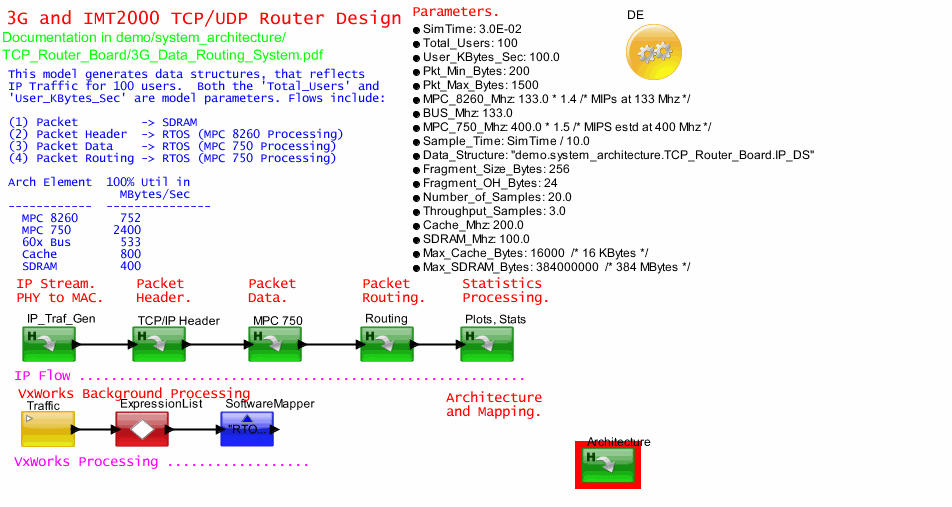TCP_UDP_Router_Board
Browsable image of the model.
- To download OpenWebStart
click on the links -
Windows- Compatibility:Windows 10 or higher (*)
macOS - Compatibility:macOS 10.15 (Catalina) or higher (*)
Linux - Compatibility:Ubuntu 18.04 LTS or higher (*)
- For an executable version,
- Mouse over the icons to view parameters. Click on hierarchy and plotters to reveal content (if provided).
- To simulate, click on Launch button, open downloaded file and click Run on the Java Security Page.

Click here to view the pdf
VisualSim Networking library provides a complete library of nodes, protocol layers, routing tables and routing algorithms to construct embedded and system networks based on the Open System Interconnect (OSI) standard. The protocol layers support Ethernet, TCP, UDP and IP. The operation and logic of the layers are defined using parameters and not using a programming language. All node and layer-level details can be extended using additional library blocks from the extensive VisualSim library. The model can triggered using a large variety of statistical traffic generator that provides the user control of the generation rate, size, priority, type and number of users. The user can define routers, switches and end-nodes in a variety of topologies. The network can contain redundant links, loops and different speed in each direction.
The Networking blocks perform a variety of networking functions, including simple model routing, complex model routing, OSI layer modeling, and channel related modeling. In addition, the Networking blocks inter-operate with the Scheduler Resource blocks, using a common data structure. This means processor oriented models can be combined with network related models without data structure translators, or additional model processing.
The blocks in this library can be used to quickly construct a network of nodes or a channel with a preset capacity. This can be an IT network or a network on a chip/board. The network models can be used to create a verification environment around architecture or can be used to evaluate a protocol design. It can also be interfaced with external tools such as Satellite Toolkit (STK) to create complex satellite networks.
Key Features
1.Provides a complete library for defining the network nodes, layers and routing table.
2. All libraries blocks are fully parameterized for quick model construction
3. Layer modeling block defines attributes such as fragmentation, multicast, queuing, messages, retry and error corrections.
4. Associated Master block can generate errors such as a link failure to test system reliability
5. Network connections can be dynamically altered to
6. Ethernet and other networking models Model network elements, protocols and evaluate routing on ICs, boards and back planes.
7. Construct models of 10 to 1000 node networks using Dynamic Instantiation
8. Conduct traffic analysis on large network systems
9. Performance analysis of innovative bus arbiters, network-on-chip and multi-node boards
10. Explore the behavior of data and control protocols in a large operating environment